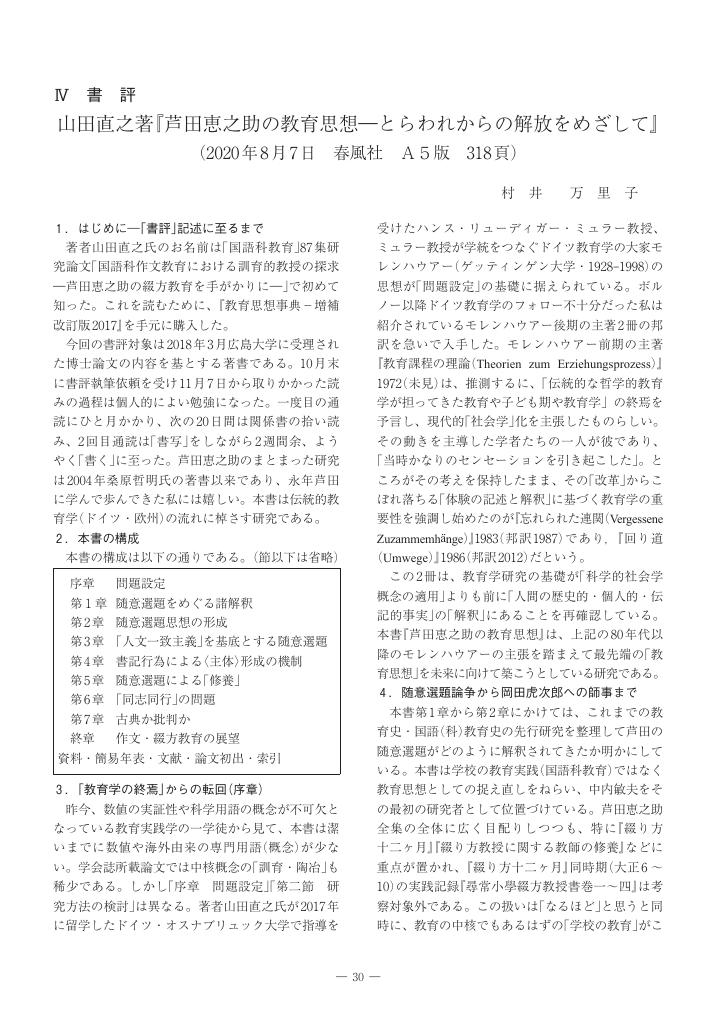3 0 0 0 OA 山田直之著『芦田恵之助の教育思想―とらわれからの解放をめざして』
- 著者
- 村井 万里子
- 出版者
- 全国大学国語教育学会
- 雑誌
- 国語科教育 (ISSN:02870479)
- 巻号頁・発行日
- vol.89, pp.30-32, 2021-03-30 (Released:2021-04-01)
- 著者
- 村井 万里子
- 出版者
- 鳴門教育大学
- 雑誌
- 鳴門教育大学研究紀要 鳴門教育大学 編 (ISSN:18807194)
- 巻号頁・発行日
- vol.31, pp.56-75, 2016
Yamaguchi(1943)proposed a model of language acquisition called Taiwa−kan(Discussion Loop). We incorporated Kaito's(1934)theory of Keisho−no−kozo−soujyo−ron(Shape of mechanism and sequence)with Taiwa−kan and developed the Language Activities Mechanism in 1981 creating several models. This newer model we continued to call Taiwa−kan has been used for many years as a base of fundamental language teaching. However, the function of the model was not described using relevant language acquisition theory thus far. This study is an attempt to solve this problem applying Hiromatsu, and Ide's Mono, Koto, Kotoba(things, matters, words)theory to describe the function of Taiwa−kan. Although Hiromatsu and Ide's theory has various commonalities with Taiwa−kan, Ide investigates in the area of semantics, whereas Hiromatsu examines the syntax of a proposition. Both argue that Mono is the unification after analysis and the vagueness before division by analysis. They also agree that Koto is a concept in which Mono are divided or split into. When this theory is combined with Taiwa−kan, the circularity of the loop's centripetal force and unified function represents the power to create the former. The loop's connotations of centrifugal force and development symbolizes the divide and analyzing of the proposition. Taiwa−kan embodies Mono and Koto into its model. Additionally, results suggest the figures of the Taiwa−kan and Sanjyu−kan(Triple Loop)differ in expression from Hiromatsu's Nijyu−no−Nishi(double separation)theory which warrants future investigation. This study provides the Taiwa−kan model with explanatory power and is suggested to be effective and fundamental for language education and language arts education.
